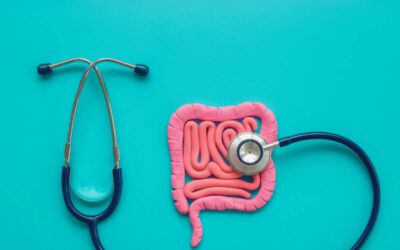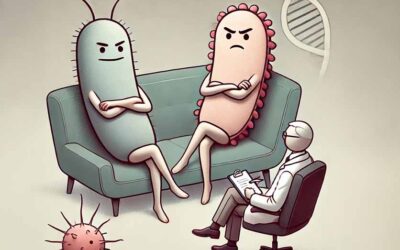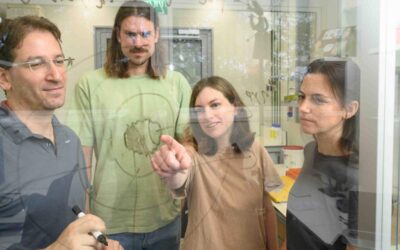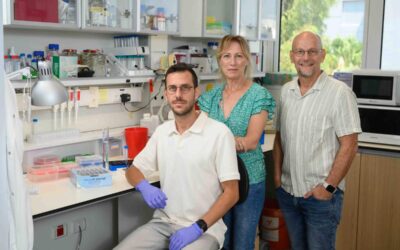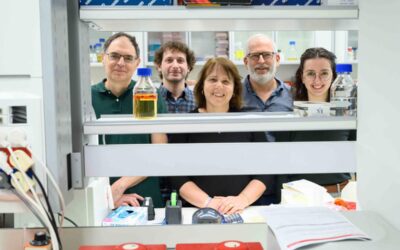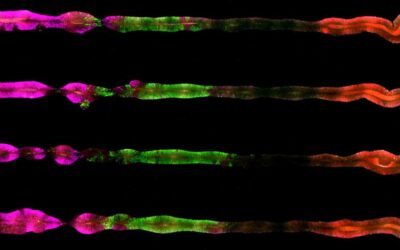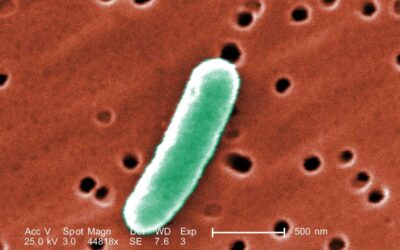Training Future Physician-Scientists: The Weizmann Institute Receives Approval for a New Medical School
The vision: Bridging the gap between today’s science and tomorrow’s medicine Whether it’s artificial intelligence, computational biology or medical engineering, the worlds of medicine and science are facing a whole series of revolutions. In an attempt to address these...
We Know What You Ate: Detailed Protein Maps Assess Intestinal Health
A new Weizmann Institute study identified all of the proteins in a stool sample – those from the microbiome, the human body and food – revealing the hidden secrets of the intestines and their impact on human disease If the organs in our bodies could talk, the...
Couple therapy
A new Weizmann Institute method provides an unprecedented glimpse into the relationship between bacteria and their host cells Like people, bacteria have their preferences when it comes to relationships. Some are totally independent, while others prefer company....
Peeling Back the Layers of Brain Tumors
Weizmann scientists have mapped common types of brain tumors at unprecedented resolution – and identified a possible reason why some patients fail to respond to a new drug The cells that make up cancerous brain tumors are extremely varied and sometimes create unique...
The Weizmann Institute of Science Ranked among the World’s Top Ten Academic Institutions
The Weizmann Institute of Science maintains its status as one of the world’s leading research institutions. It has recently been placed in the top ten among universities worldwide in a weighted (proportional) ranking of research quality published annually by the...
Weizmann Institute researchers discover how Copaxone protects the heart muscle and improves its function after a heart attack
In the late 1960s, three Weizmann Institute of Science researchers developed several protein-like molecules, called copolymers, that they believed would produce a disease similar to multiple sclerosis in laboratory animals. The scientists – Prof. Michael Sela, Prof....
A bacterial model helps reveal how our bodies prevent population explosions – and cancer
For the size of any population to remain stable over time, its birth and death rates must be balanced. If the birthrate is too high, there could be a population explosion; if it is too low, the population will shrink. This kind of balance exists, for example, among...
Researchers from the University of Michigan and the Weizmann Institute develop the first-ever complete central nervous system on a chip: It faithfully emulates that of a human embryo, from the forebrain to the bottom of the spinal cord
Once upon a time, we were all nothing but a mass of densely packed stem cells. Over time, this mass elongated, sprouted limbs on either side, buttocks at the rear, a stomach in the front and a head on the top. The process by...
A bacterial model helps reveal how our bodies prevent population explosions – and cancer
For the size of any population to remain stable over time, its birth and death rates must be balanced. If the birthrate is too high, there could be a population explosion; if it is too low, the population will shrink. This kind of balance exists, for example, among...
A Weizmann Institute method for tracking the effects of drugs on zebrafish may help develop improved therapies for depression and other mood-related disorders
Psychedelics are a hot topic in labs all over the world because they hold great potential for relieving the symptoms of depression, anxiety, PTSD and other mood-related conditions. Still, there is a major hurdle to developing these substances into safe, effective...


